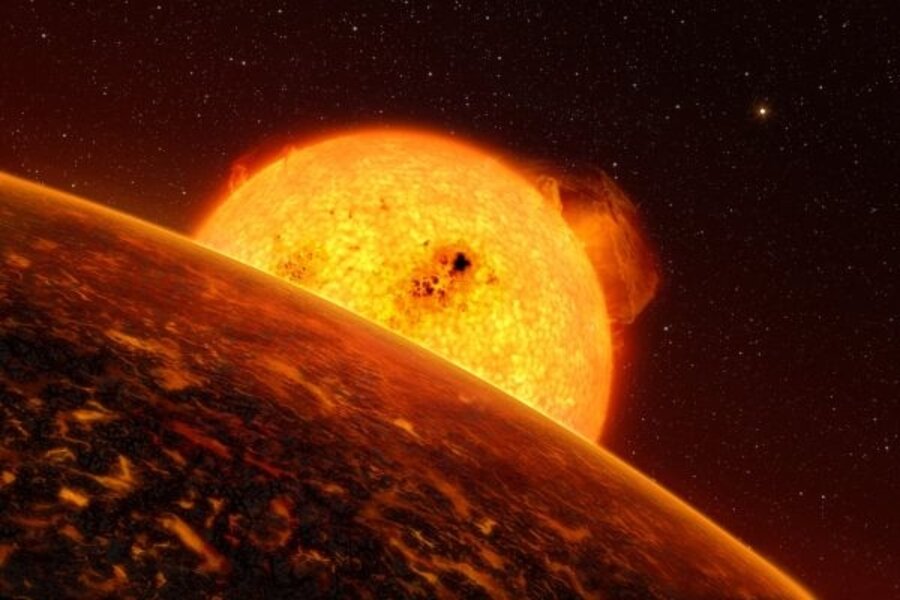Astronomers find 'super Earth' around another star; call it Rocky
Loading...
Quick! Before you begin reading, drop down to the bottom of the post, activate the YouTube link, then quickly scroll back up here (all you really need is the sound).
Laydeeezzz and gentlemun, boyzzz and girlzzz, an international team of astronomers on the Third Rock from the sun gives you the best evidence yet for a rocky planet -- not too much bigger than Earth -- orbiting another star.
The planet is called CoRoT-7b. And it appears to have a sibling super-Earth, CoRoT-7c, though much less is known about it. This makes the system the first dual super-Earth system astronomers have found. The team summarized its findings today at the European Planetary Science Congress, meeting this week in Postdam, Germany.
You can find a lay-language summary here. You can find a PDF of the formal results, accepted for publication in the journal Astronomy and Astrophysics, here.
CoRoT-7b is the smallest exoplanet found so far. It's slightly more than 1.5 times as large as Earth. But any vague resemblance stops there.
The parent star -- 500 light-years away in the constellation Monoceros -- is some 1.5 billion years old. The planet orbits its star at a distance of less then 2 million miles, giving it a "year" that lasts about 20 hours.
With an orbit that close, the team estimates that the temperatures on the planet's surface range somewhere between 1,527 to 2,327 degrees Celsius on the sunlit portion (think molten on the surface) and a frosty -200 degrees C on the night portion.
The team first announced it had discovered the planet in February. But it took additional measurements from ground-based telescopes to provide enough data for astronomers to estimate the planet's mass and its radius. For now, the best the team can do is give a maximum estimate for the mass -- somewhere around 15 times Earth's mass. CoRoT-7b's radius is slightly more than 1.7 times Earth's radius.
Given those two clues, the team estimates that the planet's density is similar to Earth's. Ergo, it's a rocky planet.
A second team flipped on its computers and with some clever modeling came up with estimates of the planet's composition, as well as their own mass estimate. Based on their calculations, CoRoT-7b is likely to be made largely of iron and silicates, perhaps with a thin atmosphere of vaporized silicate. This team estimates that the planet's mass likely falls between 7 and 15 times Earth's mass. You can find the formal report of their results here. Their work, too, is slated to appear in Astronomy and Astrophysics.
Perhaps as intriguing are the range of possibilities for how the planet formed. It could have originated as a terrestrial-like planet, the team posits. Or it could be the remnant core of what once was a ice or gas giant that migrated too close to the star to retain its gases or ices.
For the record, CoRoT is the acronym for a French planet-hunting, star-studying satellite launched at the end of December 2006. The "7" refers to where this new solar system ranks on the list of systems CoRoT has found. And the "b" refers to the planet itself. Oh yes, there is no "a." If there was, it would be the star itself, but the star is known merely as CoRoT-7.





